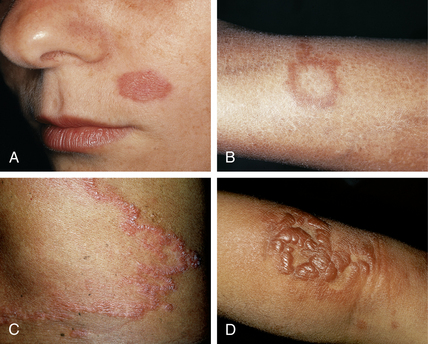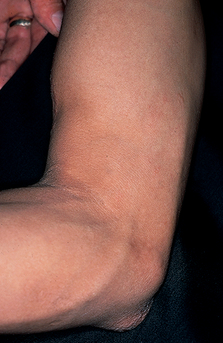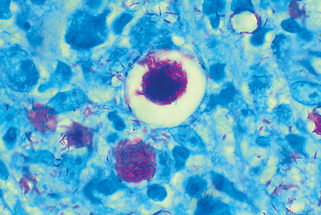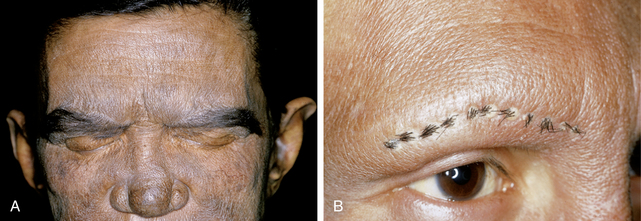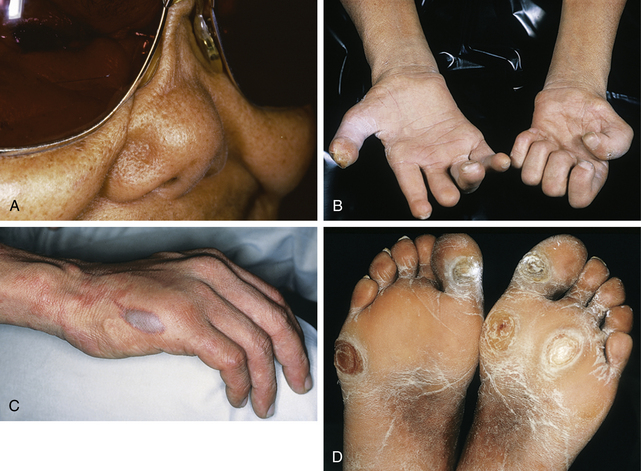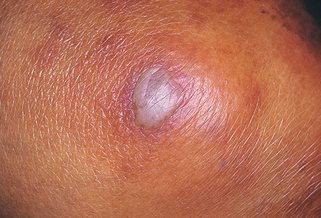Chapter 29 Hansen’s disease (leprosy)
Type I reactions (reversal reactions) complicate unstable dimorphous leprosy and represent alterations in the patient’s cell-mediated immunity. The immunity may be either upgraded or downgraded. Typically, in type I reactions, existing lesions become acutely inflamed.
Type II reactions (most commonly erythema nodosum leprosum [ENL]) occur in lepromatous leprosy (Fig. 29-6). ENL reactions are believed to represent immune complex precipitation in blood vessels due to released antigens from M. leprae organisms that have been damaged by antibiotic therapy. The patients develop red, tender nodules mainly on their extremities, associated with constitutional symptoms including fever, arthralgias, lymphadenitis, and neuritis.
Key Points: Hansen’s Disease (Leprosy)

